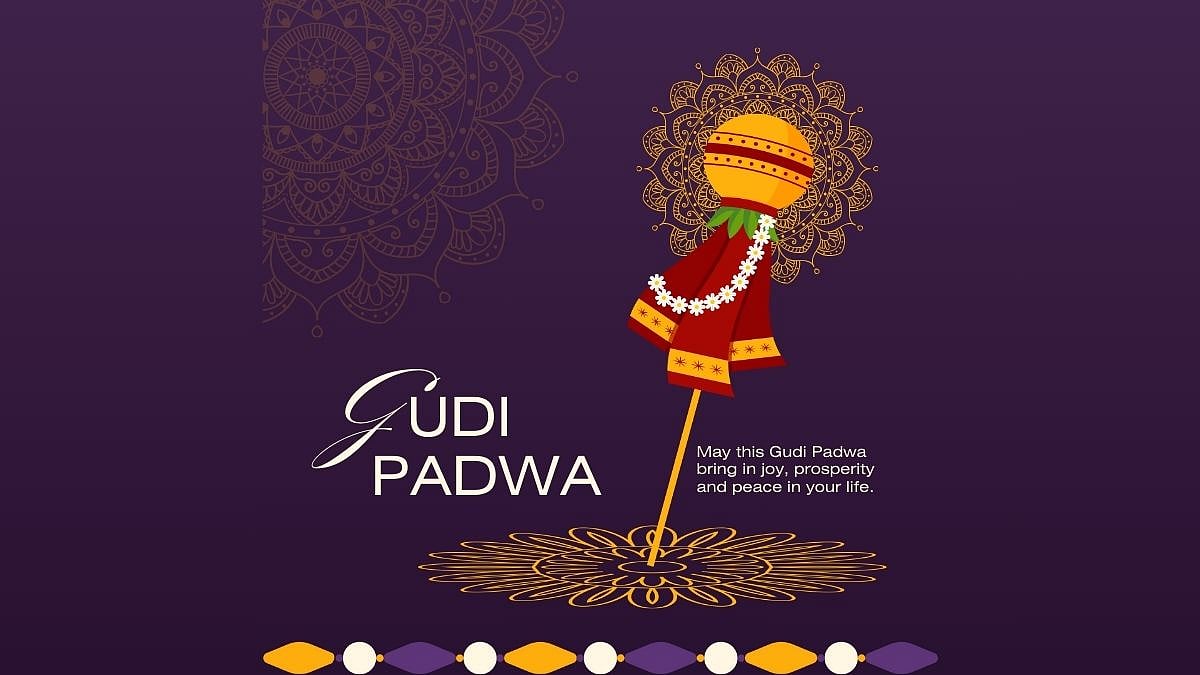Gudi Padwa is a religiously significant festival for Hindus. According to the Hindu calendar, it marks the beginning of the Marathi New Year and the first day of Chaitra month. The festival is celebrated with colours and by making rangoli. The festival is also celebrated in Goa, Daman, and Diu.
What is Gudi Padwa?
The festival, also known as Samvatsara Padvo, marks the first day of the New Marathi Year and the harvest season in Maharashtra. The festival is known for its many different names across the nation. In Goa, it is called Padyo; in Andhra Pradesh and Karnataka, it is called Ugadi.
The Sindhi community celebrates the occasion of Cheti Chand on the second day of Shukla Paksha, also known as Jhulelal Jayanti. The term “Gudi” signifies the flag or emblem of Lord Brahma, while “Padwa” refers to the first day of the moon phase.

Gudi Padwa 2025 | Canva
Which direction is considered auspicious for hoisting the Gudi and why?
During the Gudi Padwa celebrations, the Gudi (a decorated pole) is traditionally placed on the right side of the main entrance or on a window facing the east. The East direction is considered a symbol of energy, hope, and new beginnings because the sun rises from the same direction. The Gudi can also be placed in the North-East direction.
Gudi Padwa can be celebrated by wearing new clothes, decorating homes with flowers, creating rangolis outside, and preparing delicious food. The festival is marked by a cloth wrapped around a bamboo stick, adorned with neem leaves and a garland.

Gudi Padwa 2025 | Canva
Significance of Gudi Padwa
According to Hindu mythology, Gudi Padwa is celebrated on the day Lord Brahma created the universe. It is also believed that this festival was celebrated when King Shalivahana won and returned to Pathan. People hoisted the flag.
